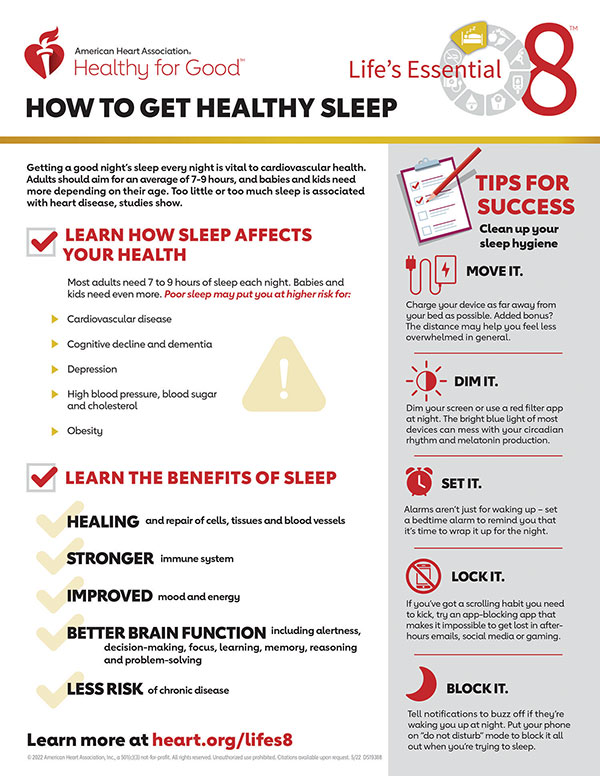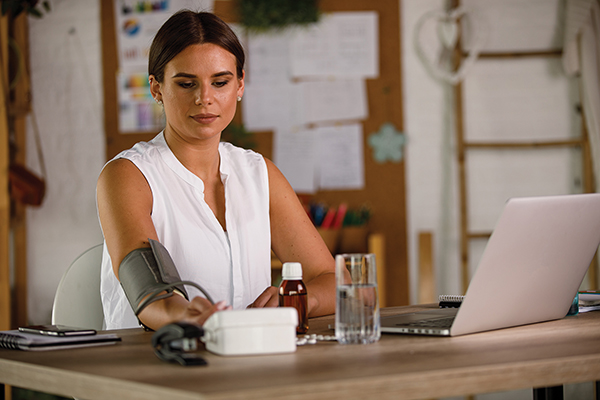Maintain Your Health
(Family Features) Another cough and cold season calls for healthy preparation, and while there may not be a foolproof plan for escaping pesky germs, taking preventive steps and practicing self-care can help protect your health.You can catch a cold or flu any time of the year, but they seem more common during the cooler months.
“As much as we all would love a quick cure for the common cold, unfortunately, that doesn't exist,” said Ian K. Smith, MD. “However, there are many options one can try to relieve cold and flu symptoms, including over-the-counter medications. These medications can provide fast and much-needed relief.”
Reduce the chances you’ll contract a serious illness this cold season by following these tips from the experts at Mucinex:
Make handwashing a priority. Preventive measures like washing your hands often can significantly lower your odds of getting sick. In fact, handwashing is such a powerful tool against germs that the Centers for Disease Control and Prevention compared it to a “do-it-yourself vaccine.” Wash regularly with soap and water for about 20 seconds, especially when handling food, caring for someone sick, or after using the restroom.
Get your flu shot. The CDC recommends getting a yearly flu vaccine to protect yourself from flu viruses. Ideally, everyone 6 months and older should get one, especially anyone at high risk for flu complications due to underlying conditions or other factors.
 Make overall wellness a way of life. Adopting healthy everyday habits means your body is in better condition to fight off potential attacks by germs and combat an illness more effectively if you do get sick. A well-balanced diet that includes moderate portions from each of the major food groups can help ensure you’re getting the nutrition and nutrients your body needs. Staying physically active can help promote a stronger immune system. Getting enough sleep and making sure you’re drinking enough water can also ensure your body is ready for whatever the season brings.
Make overall wellness a way of life. Adopting healthy everyday habits means your body is in better condition to fight off potential attacks by germs and combat an illness more effectively if you do get sick. A well-balanced diet that includes moderate portions from each of the major food groups can help ensure you’re getting the nutrition and nutrients your body needs. Staying physically active can help promote a stronger immune system. Getting enough sleep and making sure you’re drinking enough water can also ensure your body is ready for whatever the season brings.
Stock up on necessary supplies. If you do get sick, the best place for you is at home, where you can nurse yourself back to health. That means having the essentials on hand, like over-the-counter medications to treat uncomfortable cold and flu symptoms. Be sure to check last year’s leftovers, as some may have expired. A shopping list to fight the common cold and flu symptoms should include pain relievers, fever reducers, decongestants, antihistamines, throat lozenges, and cough suppressants, as well as plenty of facial tissue, a working thermometer, humidifier, and more. Also, update your supply of hand sanitizer and disinfecting cleaners and sprays to protect family members in your home.
Relieve bothersome symptoms. When you’re under the weather, treating your symptoms gives you a reprieve and lets your body rest so you can get back to feeling better. A cough is a common cold symptom, and relieving chest congestion that causes you to cough frequently can make a big difference. An option like Mucinex Extended-Release Bi-Layer Tablets, with the No. 1 pharmacist-recommended expectorant, is clinically proven to relieve chest congestion and thin and loosen mucus to make your cough more productive for up to 12 hours. If symptoms persist, contact your health care professional.
Do your part to prevent the spreading of germs. If you do get sick, know you can take steps to protect those around you. Simple acts like covering your nose and mouth with a tissue when you cough or sneeze and using your elbow if you don’t have a tissue can be effective in preventing the spread of germs. It’s also important to wash your hands well and keep a distance from others to help prevent the spread of your illness.
Find more advice for preventing illness and protecting yourself during this cough and cold season at Mucinex.com.
Fight Congestion Like a Pro
When you have a cough, you’ll try just about anything to feel better. Over-the-counter medications such as decongestants and some lifestyle habits can make a difference.
Nasal decongestants that include the ingredient phenylephrine or pseudoephedrine work by constricting blood vessels, which allows more air to pass freely through your nose. This leads to drier nasal tissues and less mucus draining down the back of your throat. Reducing postnasal drip means you’ll cough less often and experience less pain and soreness in your throat.
As decongestants constrict your blood vessels, other symptoms like sinus pressure and a stuffy nose also tend to improve. If you take a multi-symptom cough medicine, you can reap the benefits of a decongestant plus an expectorant to loosen mucus, a cough suppressant to minimize coughing and a pain reliever for any throat or sinus pain.
Lifestyle habits can also go a long way toward easing cough symptoms on their own or paired with medication.
- Stay hydrated. Drinking plenty of water or other fluids helps thin the mucus in your chest.
- Suck a lozenge. Let a lozenge dissolve in your mouth to soothe your throat and ease a tickling, dry cough.
- Use a humidifier. Dry air can worsen throat pain and coughing. A humidifier can help by moistening the air you breathe.
- Rest. Skimping on rest when you have a cough or cold can make healing harder. Allow yourself to relax and sleep as needed.
(Photos courtesy of Getty Images)
Mucinex


.jpg)




 Avoid Food and Beverage Close to Bedtime
Avoid Food and Beverage Close to Bedtime
 The first step you can take in reducing your risk for stroke is knowing your blood pressure and keeping it in a healthy range. High blood pressure is the No. 1 preventable cause of stroke, according to the American Heart Association.
The first step you can take in reducing your risk for stroke is knowing your blood pressure and keeping it in a healthy range. High blood pressure is the No. 1 preventable cause of stroke, according to the American Heart Association.



.jpg)

 Like any muscle, your brain needs exercise. Your workout equipment for your brain can include activities like puzzles, reading, learning an instrument, taking up a new hobby or learning a new language.
Like any muscle, your brain needs exercise. Your workout equipment for your brain can include activities like puzzles, reading, learning an instrument, taking up a new hobby or learning a new language.
